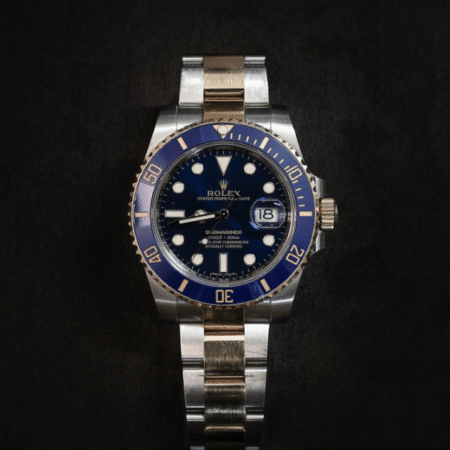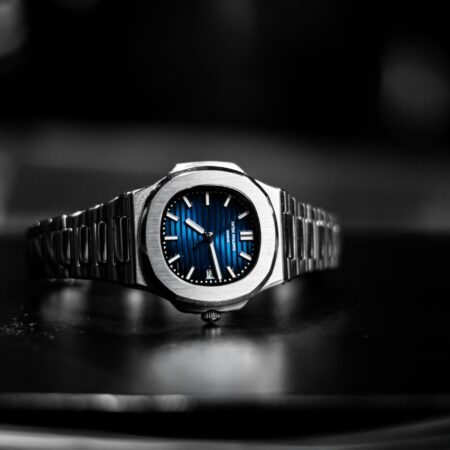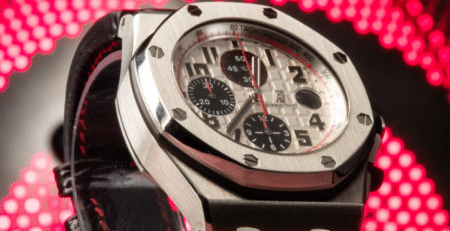The watch industry has sold us a compelling narrative. Your timepiece, they suggest, is a window into your soul. Buy a pilot’s watch? You’re an adventurer. Wear a dress watch? You appreciate refinement. Sport a limited edition? You’re a maverick.
Marcus Collins’ artifact theory provides intellectual scaffolding for this belief—that objects serve as “cultural markers” signaling our tribal affiliations. Applied to watches, it’s seductive logic. But here’s what the industry won’t tell you: most of us are performing characters we’ve seen in advertisements.
Consider the typical Royal Oak Offshore owner. Marketing suggests they split time between boardrooms and dive boats. Reality? They’re more likely to split time between Zoom calls and their Peloton. The watch reflects their aspiration.
The Speedmaster Professional tells a similar story. Marketed as the choice of those who push boundaries, it’s more accurately the choice of those who appreciate that others once did. Nothing wrong with that, but let’s call it what it is: nostalgia monetized at $6,350 retail.
What Watches Actually Reveal
After two decades in this world, here’s what watch choices genuinely indicate:
Financial Position: Obviously. But more interesting is what people stretch for. The person who saves for years for one grail piece versus the collector with dozens of “investments.”
Risk Tolerance: Not in adventure, but in taste. Buying a Rolex is safe. Buying a Ressence or MB&F requires confidence that your aesthetic judgment supersedes conventional wisdom.
Relationship with Time: The most telling aspect. Does someone wear a watch to mark occasions or to forget time exists? The former suggests anxiety about mortality; the latter, either zen acceptance or dangerous denial.
The Patterns That Matter
Forget the marketing archetypes. Real patterns emerge in unexpected ways (note: the following archetypes are affectionate caricatures, we all contain multitudes):
The Completist: Owns every variation of one reference. Usually successful in narrow, specialized fields. Approaches relationships with similar thoroughness.
The Flipper: Constantly trading, never satisfied. Often successful entrepreneurs. Views everything—including relationships—as potentially upgradeable.
The Inheritance Hunter: Only buys watches “for the next generation.” Usually had complicated relationships with their own parents. Invests heavily in ideas about legacy while sometimes neglecting the present.
The Specification Obsessive: Can recite movement statistics but never mentions how a watch makes them feel. Typically in technical professions. Struggles with emotional vocabulary in all areas.
If you recognized yourself in any of these, congratulations, you’re human. We all embody different archetypes depending on the day, the watch, and our current existential crisis.
The Uncomfortable Truth
The most revealing thing about watch choices is how we justify the choice. The elaborate narratives we construct around chunks of steel and silicon reveal our deepest insecurities and aspirations.
“I appreciate the engineering” often means “I need my materialism to seem intellectual.”
“It’s an investment” usually translates to “I’m uncomfortable with pure enjoyment.”
“It has heritage” frequently means “I lack confidence in my taste.”
The Liberation
Here’s the thing: once you acknowledge that your watch is just a watch, not a personality broadcast system, you’re free to enjoy it for what it is. A mechanical marvel. A piece of art. A conversation starter. A personal pleasure.
The collector who openly admits “I bought this because I think it looks cool” is invariably more interesting than the one who delivers a dissertation on “horological significance.”
Finals
The most telling revelation? Those who truly don’t care about watches at all. In a world where even “not caring” has become a carefully curated aesthetic (witness the tech CEO in a Casio), genuine indifference to status symbols might be the ultimate power move.
But that’s a level of security few of us achieve. So we’ll keep buying our mechanical security blankets, constructing elaborate justifications, and pretending that our choice of wrist jewelry reveals profound truths about our inner lives.
At least we’re all performing together. There’s something beautifully human in that shared delusion











